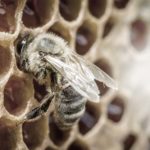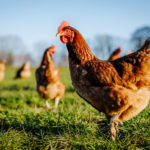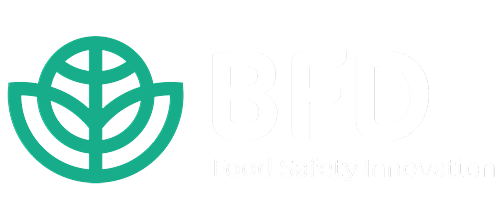
Side Dishes: Day 6 – 12 Days of Food Safety
Day 6: Side Dishes
12 Days of Food Safety
It can be tradition to serve a choice of hearty meals during the holiday season, and having some tasty side dishes can play a crucial role in complementing these main courses.
Here are some popular side dishes that are can be enjoyed over the festive period.
- Mashed Potatoes: Creamy mashed potatoes are a classic side that complements many main dishes.
- Stuffing: Whether it’s traditional bread stuffing or a variation with ingredients like sausage, apples, or chestnuts, stuffing is a holiday staple.
- Honey Glazed Roasted Root Vegetables: A mix of root vegetables, such as carrots, parsnips, roasted with honey and herbs for a sweet and savoury flavour
- Creamed Spinach: Spinach cooked in a creamy sauce, often with cheese or a béchamel base.
- Garlic Parmesan Roasted Vegetables: A mix of colourful vegetables such as tomatoes and peppers roasted with garlic and Parmesan cheese.
- Stuffed Mushrooms: Mushrooms filled with a flavourful mixture of breadcrumbs, herbs, and cheese.
- Grilled Asparagus: Asparagus spears seasoned and grilled for a delicious smoky flavour.
- Cranberry Orange Glazed Brussels sprouts: Brussels sprouts cooked with a tangy cranberry and orange glaze, tossed with nectarines, olive oil, balsamic glaze, salt, and pepper.
- Grape and Walnut Salad: Mixed greens, red and green grapes, candied walnuts, blue cheese, balsamic vinaigrette.
Chemical contaminants in Fruit and Vegetables
The leading chemical contaminant found in fruit and vegetables are Pesticides. Pesticides are chemicals designed to kill or control insects, weeds, fungi, rodents and microbes. Pesticides can be used in many industries including agriculture, aquaculture, food processing, transportation and storage. These sectors use a range of various pesticides with the intention to reduce or eliminate yield losses, maintain high quality of products and prevent other undesirable effects that may be caused by pests 1.
However, these pesticides; many of which have been found to be harmful to human and animal health as well as to the environment, can enter the food chain through various pathways. The contamination primarily occurs during the production, application, and processing of agricultural products such as fruit and vegetables 1.
Every year a list is compiled by the Environmental Working Group (EWG), based on data from the U.S. Department of Agriculture (USDA) and the Food and Drug Administration (FDA) which identifies which fruits and vegetables are most likely to be found contaminated with pesticides 2.
Below is a list of “the dirty dozen” for 2023: 2
- Strawberries 2
- Spinach 2
- Kale, collard, and mustard greens 2
- Nectarines 2
- Apples 2
- Grapes 2
- Cherries 2
- Peaches 2
- Pears 2
- Bell and hot peppers 2
- Celery 2
- Tomatoes 2
Pesticide Monitoring
With risk posed to humans through the consumption of contaminated food stuffs, most countries routinely test for pesticides in various agricultural products to ensure food safety and compliance with established regulations.
Many countries set maximum residue limits (MRLs), which are the maximum allowable concentrations of pesticide residues in, or on food products. These limits are established based on scientific assessments of potential health risks and are designed to ensure that the consumption of treated products is safe.
Within Europe, the European Food Safety Authority (EFSA) Pesticide Residues Unit gives scientific advice relating to the possible risks on the presence of pesticide residues in food and feed treated with plant protection to the European Commission who oversee EU policies on food safety. With the proposals supplied by the EFSA regarding the setting of MRLs, The European commission have collated Regulation (EC) No 396/2005 which establishes maximum residue limit (MRLs) for pesticides in or on food and feed products. The regulation is part of the broader framework of EU regulations and directives aimed at ensuring food safety and protecting consumer health 3.
EU member states are responsible for monitoring and enforcing compliance with MRLs. This involves routine testing of food and feed products for pesticide residues at various points in the food supply chain, including at ports of entry. Monitoring pesticide residues is a critical aspect of food safety programs, and testing is conducted by government agencies, food safety authorities, and regulatory bodies responsible for public health. If a product exceeds the established MRL, regulatory actions may be taken, alongside product recalls or restrictions of sale 3.
The Rapid Alert System for Food and Feed (RASFF) is a European Union (EU) initiative designed to facilitate the rapid exchange of information on food and feed safety issues among member countries and the European Commission. The 2022 Annual Report Alert and Corporation Network, found that pesticide residues were the most notified issue logged within RASFF portal, with 990 notifications. The most commonly implicated product category for 2022 was fruits and vegetables with 594 notifications, 396 cases of which pesticide residues were detected during border controls, and 198 cases already on the market. The second top reported product category for pesticide contamination was herbs and spices 4.
Pesticide residues issues escalated to RASFF involved pesticides chlorpyrifos (251), ethylene oxide and 2-chloroethanol (186), and chlorpyrifos-methyl (142) 4.
Testing for pesticides is a crucial step in safeguarding public health, protecting the environment, and ensuring that agricultural products intended for consumption meet the regulatory standards of the importing country. Testing is an integral part of a comprehensive food safety and trade control system 4.
BFD Product Testing Panel
Biorex Food Diagnostics have recognised the need for a more robust pesticide testing range to aid our customers in ensuring food safety. BFD plan to increase our pesticide offerings in 2024 with the below target groups:
Organophosphates are a class of chemical compounds that contain phosphorus and are often used as insecticides, herbicides, and fungicides. They are widely used in agriculture to control pests, as well as in some household and industrial applications 5. Chlorpyrifos is notably one of the most detected organophosphates in foods such as fruits and vegetables and has faced controversy and regulatory scrutiny due to concerns about its potential health impacts on humans, especially on children and developing foetuses. Some countries and regions have taken regulatory actions to restrict or ban the use of chlorpyrifos in certain applications. The European Union has banned the use of chlorpyrifos on crops for human consumption since 2020 6.
Neonicotinoid pesticides are a class of synthetic insecticides that are chemically related to nicotine, a natural compound found in tobacco plants. They were developed as a more targeted and supposedly safer alternative to traditional insecticides. These pesticides are widely used in agriculture to protect crops from various pests, such as aphids, beetles, and other insects. Studies have shown that Neonicotinoids potentially impact non-target organisms such as pollinators and have been linked to declines in bee populations, including honeybees and wild bees. An assessment by the European Food Safety Authority (EFSA) have shown that the two chemicals, belonging to the group of neonicotinoid pesticides, clothianidin and thiamethoxam, pose a particularly high risk. Bees are crucial pollinators for many crops, and their decline can have significant implications for global food production and ecosystem health and therefore it is imperative to monitor and test for the use of these substances 7.
Pyrethroids pesticides are a class of synthetic chemical insecticides that are modelled after pyrethrins, which are natural insecticides found in chrysanthemum flowers. Pyrethroids are widely used in agriculture, as well as in residential and commercial settings, to control a variety of pests, including insects like mosquitoes, ants, and agricultural pests. Pyrethroids can be highly toxic to fish and other aquatic organisms, and runoff from treated areas, such as agricultural fields or urban landscapes, can carry Pyrethroids into water bodies, posing a risk to aquatic ecosystems. These contaminants can persist in the environment for extended periods of time, and lead to the accumulation of these chemicals in soil and water, raising concerns about long-term exposure and potential ecological consequences. The most commonly detected Pyrethroids is Permethrin which can biocumalate into water and sediment affecting aquatic organisms 8.
Keep a watch on our social media platforms through 2024 for the release our new “Flowsense” product range that includes a range of pesticide lateral flow devices.
Have you missed the previous 12 Days of Food Safety? Not to worry. Click the images below to catch up.
References
- Mieldazys A, Mieldazys R, Vilkevicius G. Agriculture – Use of pesticides/plant protection products. https://oshwiki.osha.europa.eu/en/themes/agriculture-use-pesticidesplant-protection-products (accessed 5 December 2023).
- DIRTY DOZEN. https://www.ewg.org/foodnews/dirty-dozen.php (accessed 5 December 2023).
- Pesticides. https://www.efsa.europa.eu/en/topics/topic/pesticides (accessed 5 December 2023).
- European Commission. 2022 Annual Report Alert and Cooperation Network. chrome-extension://efaidnbmnnnibpcajpcglclefindmkaj/https://food.ec.europa.eu/system/files/2023-10/acn_annual-report_2022.pdf (accessed 5 December 2023).
- Centers for Disease Control and Prevention. Cancer Clusters. https://www.cdc.gov/nceh/clusters/fallon/organophosfaq.htm (accessed 5 December 2023).
- National Pesticide Information Center. http://npic.orst.edu/factsheets/chlorpgen.html (accessed 5 December 2023).
- Pesticide Action Network UK. Our work on neonicotinoids. https://www.pan-uk.org/about_neonicotinoids/ (accessed 5 December 2023).
- Hołyńska-Iwan I, Szewczyk-Golec K. Pyrethroids: How They Affect Human and Animal Health?. Medicina (Kaunas) 2020; 56(11). https://www.ncbi.nlm.nih.gov/pmc/articles/PMC7692614/ (accessed 5 December 2023).












